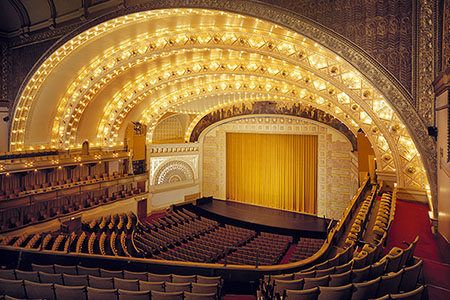

Dec. 1, 2021 – Chicago’s 311 phone line received more than 60,000 rat complaints between January 1 and November 10 this year, according to a study released by RentHop, a national apartment-hunting website and marketing data source.
That’s more than double the 26,000 rat complaint calls received by the City of New York, which boasts a population of 8.42 million people. Chicago’s population was 2.71 million in 2019.
A Windy City artist, who visits Manhattan on an annual basis, reported that indifferent New Yorkers seem to tolerate their rodent population better than weak-kneed Chicagoans.
“On a walk to an Asian restaurant near our Airbnb apartment in Brooklyn, I saw rats bigger than cats running in the street, and no one said a word,” the artist confessed. “There are no alleys in New York. They just put the garbage on the curb. Every garbage bag is in motion at night. It really creeped me out.”
In the words of the immortal Dan Akroyd: “New Yorkers are oblivious.”
King Rat City?
The Windy City, which may soon be dubbed “King Rat City,” has been the national rodent king since 2016. We soon may have to rename the Chicago Bears as the Chicago Rats. Ewww!

An annual survey by Orkin, the national pest control company, ranks the “50 rattiest cities” in the United States. Its figures, based on the number of rat treatments it provides, has ranked Chicago as the most rodent-infested city for seven consecutive years.
Homeowners, apartment managers, restauranteurs, retail shop owners, hotel and office personnel, proprietors of small and large businesses, even hospital staff – and, of course, Chicago – have been battling the sharp-toothed, furry devils since the 1800s when the first waves of creatures came from Europe to the docks of Chicago on cargo ships.
What is the rodent population’s favorite neighborhood? According to a 2021 CBS Chicago investigation, West Town led the pack with 1,202 rat complaints through June 2021, on top of 3,064 complaints in 2020, and 2,099 in 2019. That’s 6,365 rat sightings in a mere three years.
Through early November 2021, West Town’s rat complaints peaked at 3,312 sightings, RentHop reported. The West Town community includes the neighborhoods of East Village, Noble Square, River West, Ukrainian Village, Wicker Park, and parts of Bucktown.
Other North Side neighborhoods with a large rodent invasion are Lake View with 2,182 complaints and Logan Square with 2,199 complaints through November 10. Lincoln Park and Old Town are not far behind.
Breeding faster than rabbits
Apparently, Chicago rats are breeding faster than rabbits. A female rat can give birth to as many as six litters a year, with each litter containing up to nine pups.
It only takes two or three months for a female rat to become old enough to breed, so in a year a single rat could have hundreds of offspring.
Photo by Eric Isselée

In an earlier attempt toward rat abatement, Chicago city crews put dry ice – frozen carbon dioxide – into rat burrows and sealed the holes with dirt and newspaper. As the dry ice melted into a gas, it suffocated the trapped rats, leaving them to decompose in the burrow. Unfortunately, dry ice has not been approved by the U.S. Environmental Protection Agency.
In 2017, under orders from former mayor Rahm Emanuel, City Hall turned to a poison designed to make rats infertile. No report has been scoped on the success of this plan. Maybe we should get Planned Parenthood involved in the program.
Cats to the rescue
This year, up to 2,000 neutered feral cats were released to battle the rodent problem. Under the Cats at Work program launched in 2012 by Tree House Humane Society, stray cats are vaccinated against rabies, provided with food, water, and shelter, and organized into feline colonies managed by a registered caretaker.

Better for the cats to roam free and kill rats than face euthanasia. Another bonus: cat pheromones scare rats away.
However, city residents really can’t appreciate the immensity of the rat problem like this writer did in a fang-to-face encounter in a dark Old Town gangway a few years ago, while rolling the garbage containers to the curb from the gangway of our land-locked three-flat.
At least a half dozen obese, dark gray beasts, with fangs glistening in the streetlights, came swarming out of the holes they had chewed in the top of one of the garbage cans. They lept to freedom and scurried past my face and feet into the darkness.
Fear of rats overcame me. I pushed the garbage can forward and jumped backwards at least three feet. The hair on the back of my neck stood up.
It felt like I was in that torch-lit mountain mine shaft with Sylvester Stallone, covered with squealing rats in the 1982 movie Rambo: First Blood.

Rose Pest Solutions, a professional pest abatement firm, was hired to install four baited “rat garages” on the property with tasty poison packets.
This year, we installed three rat garages at another North Side building where there never was a problem. Residents reported they could hear the rats scratching inside the walls of the building.
Experts say the most important commonsense rat control rules are to take away what they need – protein-based foods and a harborage area. Some suggestions follow:
• If you cut off the food sources, the rats likely will eat the rodenticide in the rat garages.
• If rodents have chewed holes in your garbage containers, call the City of Chicago and request replacement cans.
• Make sure you clean your barbeque grill, especially the drippings tray underneath. One homeowner reported that rats burrowed through the metal bottom of his Weber grill cabinet to dine on those tasty steak drippings.

• Buy a 12-pack of old-fashioned Victor rat traps (left) on Amazon.com. Load the traps with a spoonful of peanut butter. Set the traps and put them out along your deck and backyard fence. Reportedly, the next morning you will be shoveling dead rat carcasses.
• Make sure you and your neighbors pick up dog poop on a daily basis from yards, parkways, and alleys. Experts say poop is an alternative food source for rats. “Some rats would rather eat dog poop than ribeye steak,” quipped one exterminator.













